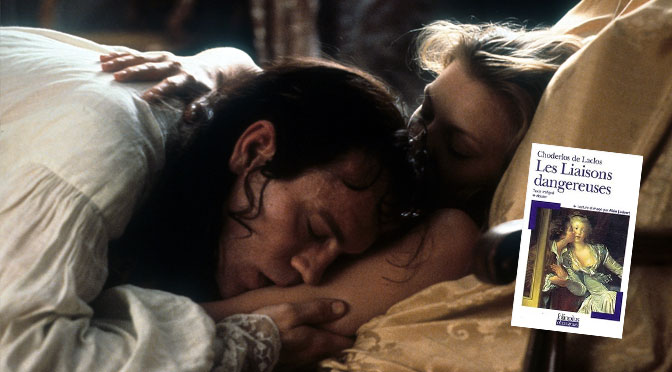As an erotic writer, it’s important to read and analyze classic novels that explore themes of love, sex, societal behavior, and deceit. One such novel is “Dangerous Liaisons” by Pierre-Ambroise-Francois Choderlos de Laclos. This 18th-century novel is controversial even by today’s standards, and it explores the game of seduction played by the two main characters, the Vicomte de Valmont and the Marquise de Merteuil, as they manipulate and conquer their prey. In this blog post, we’ll delve into the narrative style, the main characters, the themes of the story, and the writing style used in the novel and how it reflects the author’s intent. We’ll also examine the genesis of the book, its significance in French literature, and its lasting impact on modern audiences.
The narrative style of “Dangerous Liaisons” is epistolary, meaning it’s composed entirely of letters written by the characters to each other. This style allows the reader to see the story unfold from multiple perspectives and provides a deeper insight into the characters’ inner thoughts and motivations. The main characters, the Vicomte de Valmont and the Marquise de Merteuil, are both master manipulators who engage in a game of seduction for their own amusement. Valmont sets his sights on seducing the virginal Cecile de Volanges, while Merteuil seeks to exact revenge on a former lover by destroying the virtue of his current fiancée, Madame de Tourvel. The novel also features other characters who become entangled in the web of deceit, such as the innocent and naive Cecile and the virtuous Madame de Tourvel.
The themes explored in “Dangerous Liaisons” are controversial for the 18th century and remain pertinent today. Love is portrayed as a mere game and a means to an end rather than a genuine emotion. Sex is used as a weapon and a tool for manipulation, rather than an expression of intimacy between two consenting adults. Societal behavior is revealed as corrupt and hypocritical, with the aristocracy engaging in affairs and manipulations behind closed doors while maintaining a façade of respectability in public. Deceit is rampant, and the characters lie and manipulate each other with ease.
The writing style of “Dangerous Liaisons” is nuanced and intricate, with the author’s intent shining through in every sentence. The characters are not portrayed as heroic or sympathetic, but rather as flawed and morally bankrupt individuals. The letter format allows Laclos to craft a story with many plot twists and turns that are revealed slowly through the correspondence between the characters. The dialogue is sharp and witty, and the descriptions are vivid and detailed.
The genesis of “Dangerous Liaisons” can be traced back to the libertine movement of the 18th century, which celebrated sexual freedom and hedonism. Laclos was inspired by the scandalous behavior of the aristocracy and sought to expose their hypocrisy and corrupt values through his novel. “Dangerous Liaisons” had a profound impact on French literature, inspiring future writers such as Gustave Flaubert and Emile Zola. It has also been adapted into various film adaptations, such as the 1988 movie “Dangerous Liaisons” starring Glenn Close and John Malkovich, and the play “Dangerous Liaisons” by Christopher Hampton.
“Dangerous Liaisons” is a must-read for erotic writers who want to explore themes of love, sex, societal behavior, and deceit. Its narrative style, main characters, and themes are controversial and relevant even by today’s standards, and its writing style reflects the author’s intent. The genesis of the book, its impact on French literature, and its adaptations in film and plays attest to its lasting impact on modern audiences. As an erotic writer, studying classic works like “Dangerous Liaisons” is crucial to gaining a deeper understanding of the craft and to inspiring new and innovative ideas.

